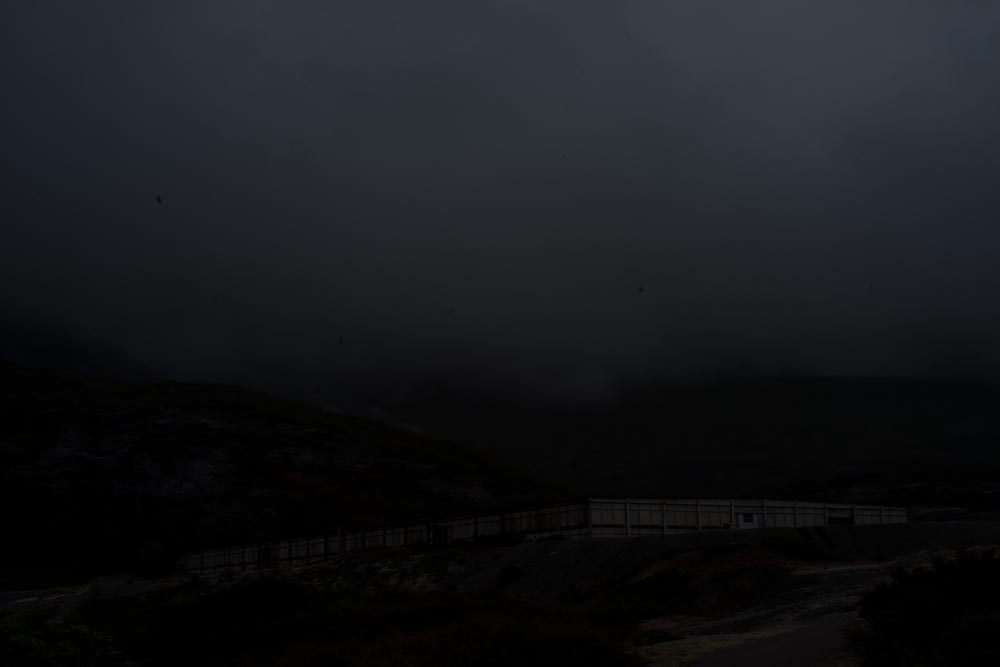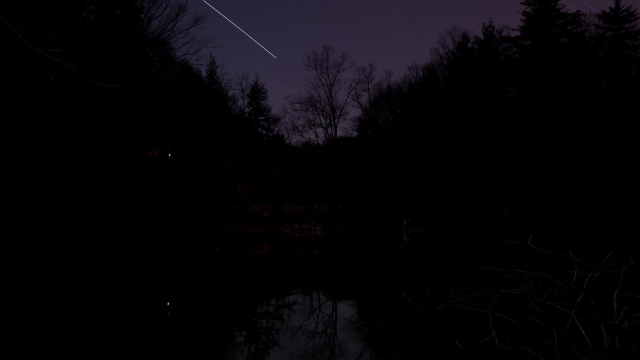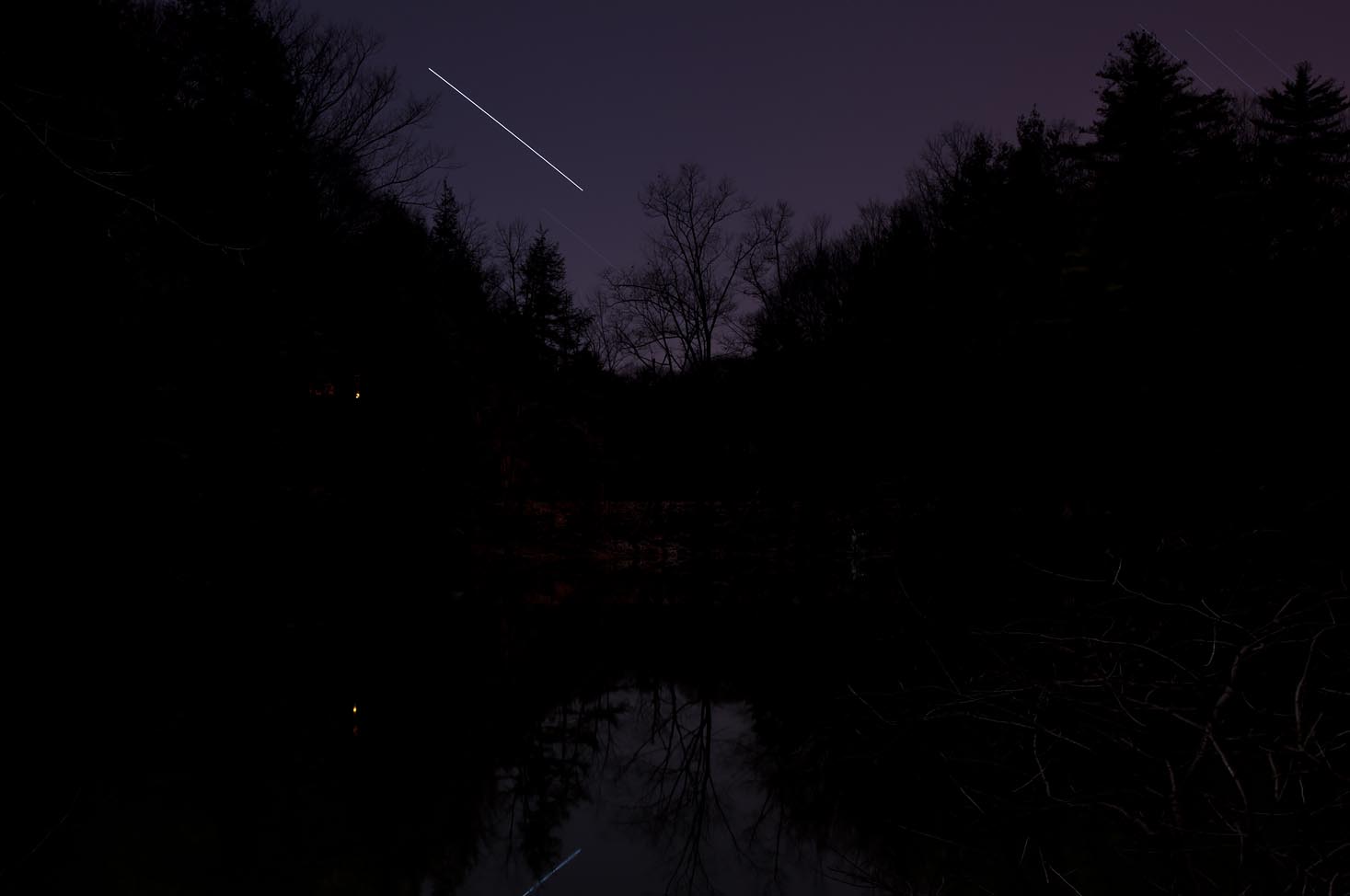Prairie Ronde Artist Residency in Paper Factory
The Prairie Ronde Artist Residency is set in the 420,000 square foot former Lee Paper Company paper mill and its adjacent 80 acres of property in Vicksburg, Michigan, near Kalamazoo.
Three Fellowships are awarded per year, which comes with a stipend of $2,000, a $500 travel grant, and private use of a car.
Artists “give back” to the community, such as a workshop, final show, or open studio days, and that they donate a piece of work to our collection.
Proposed Photography Project
Spanning history, environmentalism, and beauty, I trace lyrical night landscapes and interiors, documenting irreversible environmental shifts. These photographs capture both a sense of change as well as a haunting feeling of the place.
Beyond documentation, however, these images crystallize a sense of inertia taking place in the landscape.
As the abandoned Mill and land is surveyed–as if a cultural truth is being unearthed–I feel a link between environment and culture. Just as traditional small-town life seems to be quietly abandoned, so too is the present-day environment mostly forgotten. In both cases, there is a feeling of absence, impending human failure, tragedy, and the crushing force of nature being played out among the factory’s ruins.
Inspiration: Painting and Film
Artistic inspiration is loosely based on Hudson River Landscape painters such as Frederic Edwin Church, Albert Bierstadt, and Jean Baptiste Camille Corot. Additionally, the project is informed by Scandinavian and German cinema (Ingmar Bergman and Rainer Werner Fassbinder) and films my father would bring home to play in our darkened basement.
Intuitive Process
Working at night requires an hour or more exposures, making it impossible to see through the camera’s viewfinder. So instead, I stand beside it, “feeling” the image, intuitively framing it in the dark. By allowing my own thoughts and fears to be part of the creative photographic process, I visualize this unfolding emotional experience, trying to capture mystery.
Continuation of Environmental Work
This project is part of a long-term series spanning history, environmentalism, and beauty, representing an arc of photographs taken in at twilight and night. It is connected to work on climate change, including photographing Greenland, where I won a grant from the American-Scandinavian Foundation; a project focused on the Arctic, where I am a Fulbright Fellow alternate; image-making set in the drying vineyards in the South of France, as artist-in-residence sponsored by the French Government; and capturing coal’s impact to the American West and Wyoming, during several residencies.
Photographing at Night in and Around the Mill Details
Informed by the environment, history, and culture, I photograph the haunting beauty of the Mill interior and surrounding land at night. The focus is to trace evidence of the changing industrial landscape and capture a feeling of loss and mystery.
The project comprises two related sections: interiors of the Mill and the surrounding landscape–both photographed at twilight and in night’s darkness. Sites could include:
Nearly black interiors of the factory workspaces, made in complete darkness.
Afternoon light eerily falling on parts of the Mill.
Close-up of metal parts, walls, or other factory fixtures–inside and outside–at night.
Streaming moonlight coming through skylights partially illuminating the space.
View of the ceiling, with a trail of stars seen from skylights or windows captured as lines due to the long exposure.
Exteriors of the buildings, with the glow of the town’s lights in the background.
Views along the paths outside at night in and through fields.
Photos of and along the pond at night, as well as trees or other debris partially submerged.
Portage Creek at night and twilight.
Depending on time, additional work could be made along the North Branch Kalamazoo River, Lower Mill Pond, and Battle Creek, in and around Battle Creek.
During the daytime, I will explore the history of the Mill and its connection to Vicksburg and other nearby towns. Based on this, I’ll search for evidence of artificial elements of the factory and its use which are now hidden in the overgrown land, discarded, forgotten, or unused. I’ll note these locations while walking during the daytime.
Later in the day, photographs will be created inside or out, usually illuminated by the light and shadow of late afternoon light, by moonlight, from town lights glowing in the distance, or in complete darkness of the night where features, rooms, structures, and paths reveal themselves.
Many of the photographs could have exposures of 90 minutes or more. Taken in complete darkness, I usually cannot see what is in the camera’s viewfinder; instead, I intuitively frame the shot while standing next to the camera. Only later do I discover what I’ve photographed. This process of revelation is a key element of the work.
I will continually review the work made the evening before, generating a draft portfolio of work as the project proceeds. These could be used as the foundation of possible talks or presentations given while as a Resident and will be shared on social media daily. Usually, I make one thousand images or more.







Comments are closed.